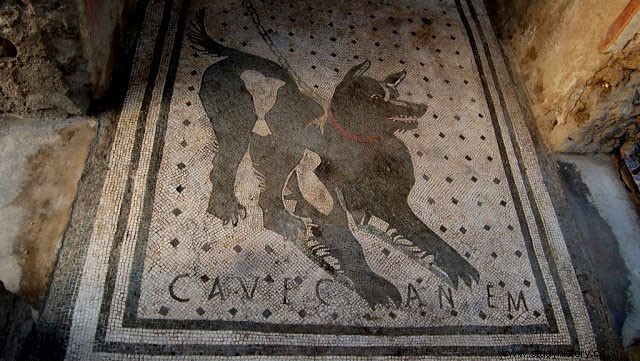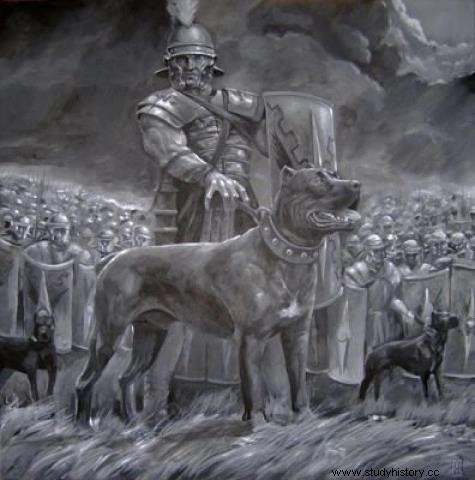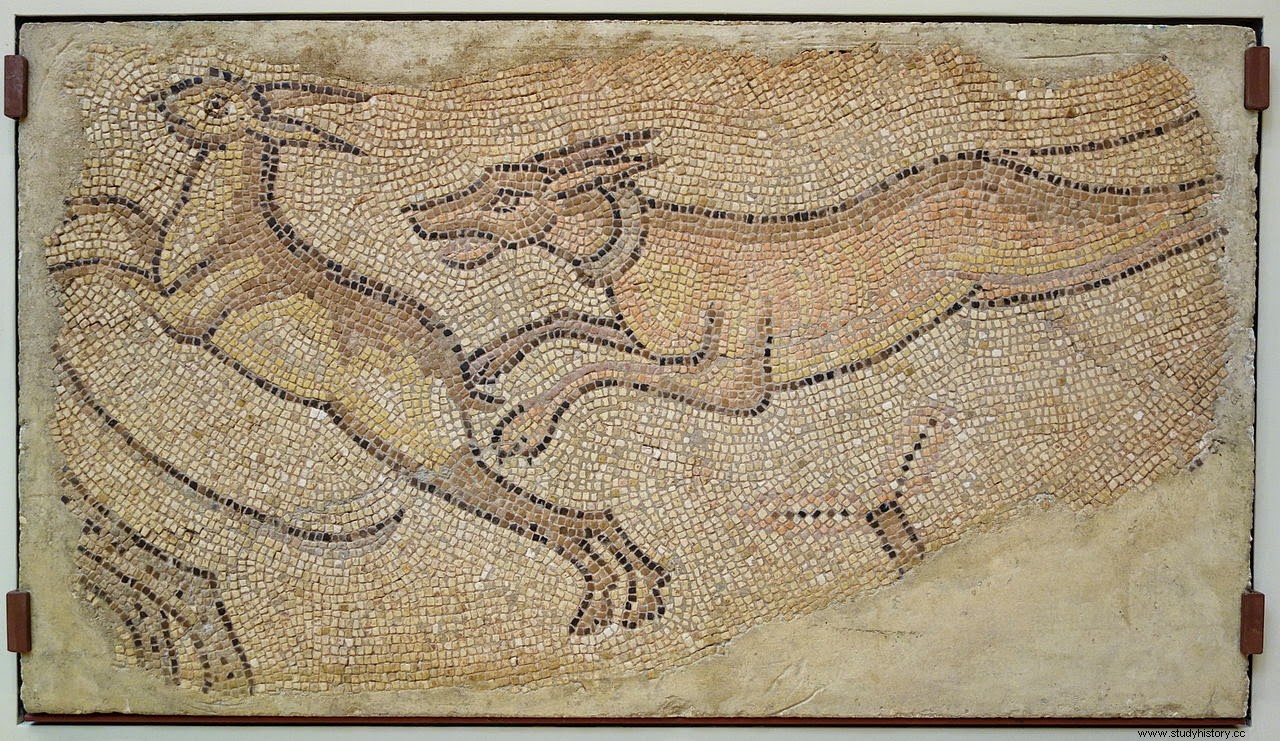I guess you've all seen the warning Beware of the dog! at the entrance of a house, because we are not original in that. A mosaic found in the vestibulum of a house in the city of Pompeii already warned…
CAVE CANEM

Next to the Cave Canem , the normal thing was to find a Molossus , dogs with a muscular build, strong jaws, a large head and a short snout. The Molossus They were used as guards. The poet Virgilio already said it …
With these guard dogs [molossus], you will never fear midnight thieves or wolves attack.
Marcus Terentius Varro describes the characteristics of this breed…
It should have a large head, floppy ears, thick shoulders and neck, wide legs, a deep bark, and be white in color in order to be easier to recognize in the dark. […] He must wear a leather collar studded with nails to protect his neck. A wolf, once injured, will be less likely to attack another dog, even one not wearing a collar.
Unfortunately for them, they were also used as war dogs (pugnacious dogs) fighting alongside the legions and even taking part in the deadly spectacles in the amphitheaters.

For hunting they preferred the Vertragus , halfway between a greyhound and a greyhound. Fine, agile and fast dog that " hunts not for himself but for his lord, and will bring him the hare unharmed in his teeth ” (Epigrams, Martial)

And of course, dogs were also pets of the Romans. For this task it was enough to be docile and faithful, and the most popular were the Canis Melitae , small lap dog with long white hair similar to the Maltese. The Canis Melitae They were larger than their current relatives and their name has nothing to do with the island of Malta, but with the Semitic word malat which means port, since it was where they usually hunted rodents. And why did the Romans want a pet? Well, oddly enough, it also had its tasks:it was entertainment for children, heating for cold nights, flea control for its owners (just like the pharaonic solution for flies) and a symbol of social status. For the common people, just as if you now ask the few remaining shepherds, it was not understood to have a dog that did not work (guard, shepherd, hunter...).
Regarding the names of dogs, Pliny recommends short names and the Cadiz Columela in his work De re rustica that have two syllables, as well as names referring to their characteristics:Asbolo (soot), Tigris (tiger), Ferox (fierce), Lupa (she-wolf), Leuco (white), Pyrrha (redhead), Cerva (hind), Celer (fast), Lakon (Spartan)…
Source:The Inventions of the Ancients
